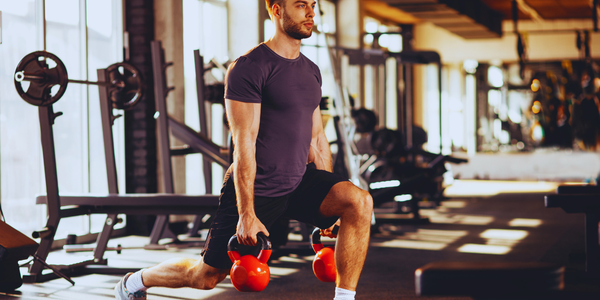Master the Perfect Plank: 3 Adjustments That Transform Results
Transform your core workout with expert tips on Perfect Plank Form. Learn 3 key adjustments to maximize strength, engage more muscles, and prevent injury while planking

https://www.youtube.com/watch?v=A2b2EmIg0dA
Did you know 30% of fitness fans do planks wrong? The perfect plank is not just holding still. It's a precise way to strengthen your core that can change your workouts. To master it, you need to know how to adjust your body for the best results.
Planks are a great exercise that needs little equipment but gives big results. By making three key changes, you can get the most out of this basic core strength training move. These tips will help anyone, from beginners to pros, improve their plank.
Small changes can make a big difference in how well you work your muscles. Knowing how to align your body and activate the right muscles is key. It helps you get stronger and avoid injuries.
Key Takeaways
- Proper plank form is critical for preventing injury and maximizing muscle engagement
- Beginners should start with 20-second holds and gradually increase duration
- Core muscles can be increased by up to 35% with correct technique
- Breathing and alignment are essential for effective plank performance
- Modifications exist for all fitness levels and age groups
Understanding Perfect Plank Form: The Foundation of Core Strength
Planking is more than just holding still. It's a full body workout that works many muscles at once. This makes it a great way to strengthen your core.
Basic Plank Anatomy and Muscle Engagement
Planking works a lot of muscles. It uses:
- Rectus Abdominis
- Transversus Abdominis
- Oblique muscles
- Erector spinae
- Shoulder stabilizers
- Glutes
- Hip muscles
Common Form Mistakes to Avoid
Getting the plank right is key. Common mistakes include:
- Collapsing lower back
- Lifting hips too high
- Dropping head
- Uneven weight distribution
The Role of Breathing in Plank Execution
Breathing is crucial in planking. Controlled, steady breaths help stabilize your core and prevent unnecessary tension. Try to breathe deeply and consistently, keeping your body relaxed yet engaged.
Start by holding a plank for 10 to 30 seconds. As you get stronger, increase the time. Just 10 minutes of planking a week can strengthen your deep abdominal muscles. It's a great and effective workout.
Essential Plank Position Adjustments for Maximum Benefits
Getting the plank right is key for any home workout. Beginners often find it hard to get the form right. This can limit the muscles worked and the benefits gained.
Understanding small but important adjustments can make a big difference in your core workout.
Let's look at three key plank position changes:
- Hand Placement Precision: Place hands directly under shoulders for a straight line from wrist to shoulder. This avoids strain and boosts muscle use.
- Core Engagement Technique: Pull your navel towards your spine. This protects your lower back and works your core deeper.
- Full Body Tension: Tighten glutes and flex quads to keep your body straight from head to heels.
For beginners, modified planks can be a big help. Knee or forearm planks are great for building strength. Studies show that holding a plank for 30 seconds with good form is better than longer, bad attempts.
For home workouts, aim to increase plank time gradually. Start with 10-second holds and work up to 30-45 seconds as you get stronger. Experts suggest doing 4 rounds of planks, each lasting 30-60 seconds, to strengthen your core.
Quality is more important than quantity in plank exercises. Focus on keeping the right form, using the right muscles, and breathing right for the best results.
Conclusion
Core strength training hits new heights with the perfect plank technique. This exercise works 100% of your core muscles at once. It's not just a workout; it's a full body challenge that boosts strength and stability.
Adding plank variations to your routine can really boost your fitness. From easy forearm planks to tough side planks, each one has its own perks. Studies show planks can lower back pain, improve muscle endurance, and enhance sports skills. Plus, they're easy to do anywhere, needing no equipment or space.
Getting fit starts with mastering the plank. Focus on the right form, increase your hold time, and try different planks. Start with 15-30 second holds and get better over time. Your hard work will make your body stronger, improve your posture, and boost your health.
FAQ
How long should I hold a plank?
Start with 20-30 seconds for beginners. As you get stronger, aim for 45-60 seconds. For the advanced, try holding it for 2-3 minutes. The goal is to keep your form perfect, not just hold it long.
What are the most common plank form mistakes?
Common mistakes include sagging hips and raising your head. Also, wrong shoulder placement and a sagging lower back are big no-nos. These can hurt your form and effectiveness. Keep your body straight, engage your core, and shoulders over your elbows.
Can planks help me lose belly fat?
Planks are great for your core, but they won't melt belly fat alone. They help build muscle and improve stability. For fat loss, you need a balanced diet, cardio, and strength training. Planks can boost your metabolism and muscle, aiding in fat loss.
Are there plank variations for beginners?
Yes! Start with knee planks, wall planks, or counter-top planks. These are easier and help build strength and technique. Once you're stronger, move to standard planks and then more challenging ones like side planks.
How often should I do planks?
Do planks 3-4 times a week for best results. They can be part of a full workout or a core session. Rest for a day between plank workouts. As you get better, you can do them more often and for longer.
What muscles do planks actually work?
Planks work many muscles. They engage your core, shoulders, arms, back, glutes, and legs. This makes them a great exercise for strength and stability.
How do I breathe correctly during a plank?
Breathe deeply and steadily through your nose and mouth. Avoid holding your breath. Keep your core tight and breathe rhythmically. This helps you hold the plank longer and more effectively.
Source Links
- How to Do a Perfect Plank
- How to do a Plank: Proper Plank Form | John Sifferman
- How to Perform the Perfect Plank - Total Gym Pulse
- How to Do a Proper Plank That Works All the Right Muscles
- Here’s the Right Way to Do a Plank
- How to Do Planks the Right Way
- Learn How to Do a Plank to Improve Core Strength
- How to Do a Perfect Plank for Core Strength & Stability
- Plank Exercise Benefits: Why You Should Work Your Core
- How to Do the Perfect Plank Exercise? The Best Ab Exercise
👉 Join the Active Man Community
Get expert tips, workout guides, nutrition hacks, and the latest trends delivered straight to your inbox every week. No spam — just actionable insights to help you live stronger, healthier, and better.





